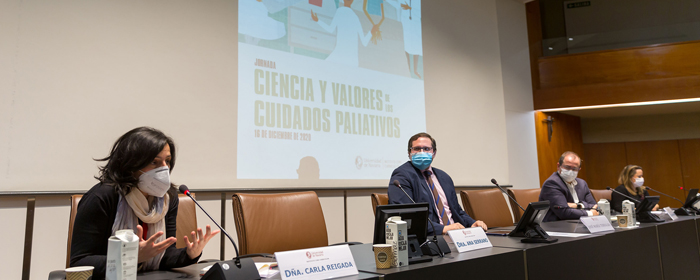La calidad del aire en la Comunidad foral es buena, con bajos niveles de metales pesados e hidrocarburos
Air quality in the region is good, with low levels of heavy metals and hydrocarbons.
This is confirmed by a study carried out by Janire Aldabe from Pamplona, Spain, Chemistry at the University of Navarra.
According to a study carried out at the University of Navarra by Janire Aldabe from Pamplona, Chemistry , air quality in the region is good and has a low level of heavy metals and polycyclic aromatic hydrocarbons.
This is confirmed by the data collected by this researcher for the doctoral thesis that she has carried out in the department of Chemistry and Edaphology of the School of Sciences, where she has examined a total of 561 air samples: "Throughout 2009 we took samples in three stations: One rural, one urban and a third urban but with more traffic, located in the Señorío de Bertiz Natural Park, in Iturrama street and in place de la Cruz in Pamplona, respectively", details the new doctor.
In her study, Janire Aldabe analyzed time series of ambient air levels of several pollutants, such as PM10 -large particles such as dust, ash, soot, cement or pollen-, PM2.5 -smaller particles derived from organic compounds and heavy metals-, carbon monoxide (CO) and ozone (O3), among others. "In the three sampling stations we found that the levels recorded were similar to those in other areas of northern Spain, and in no case exceeded the limits set by the European directive 2008/50/EC," stresses the researcher.
Less concentration of metals in Navarra
Although the characterization Chemistry of atmospheric particulate matter (called MPA) gave results similar to those recorded in rural, urban and traffic background stations in Spain and Europe, in the case of metals concentrations were reached "significantly lower than those recorded in stations with similar characteristics", clarifies the graduate in Chemistry.
Regarding the main sources of particulate matter MPA, the researcher of the University of Navarra highlighted the air masses coming from the Atlantic Ocean, characterized by low concentrations of MPA, as the most frequent episode in 2009 (60%). On the other hand, 22 events lasting several days with high levels of particulate matter related to intrusions of air masses of European origin, local pollution episodes in Pamplona and intrusions of North African air masses were also identified.
In the case of hydrocarbons, the specialist highlights that the levels of Benzo pyrene -considered as the most carcinogenic hydrocarbon- "were not exceeded in any of the measurements". Likewise, they identified that fossil fuels (natural gas, wood and coal) were the main emission source at the Iturrama urban station. "At place de la Cruz and Bertiz, on the other hand, the majority of emissions were from diesel and gasoline vehicles", clarifies Janire Aldabe.




